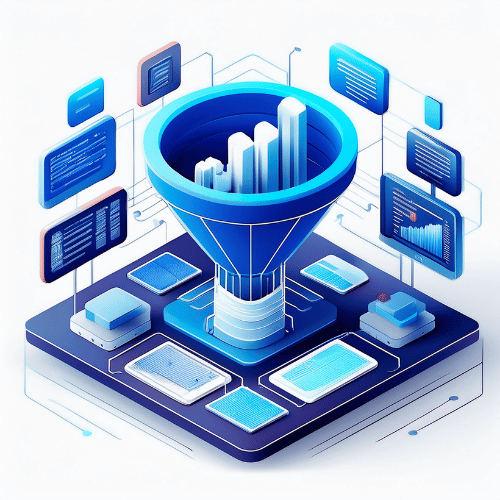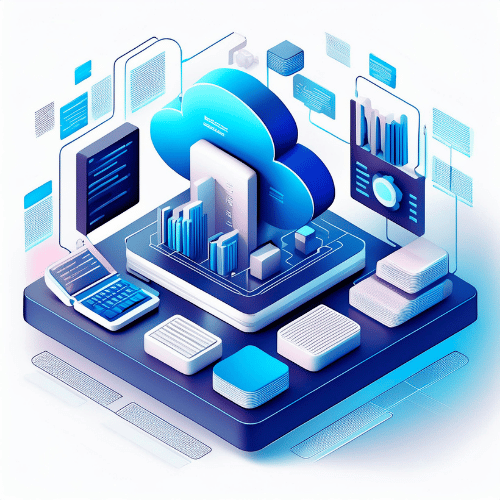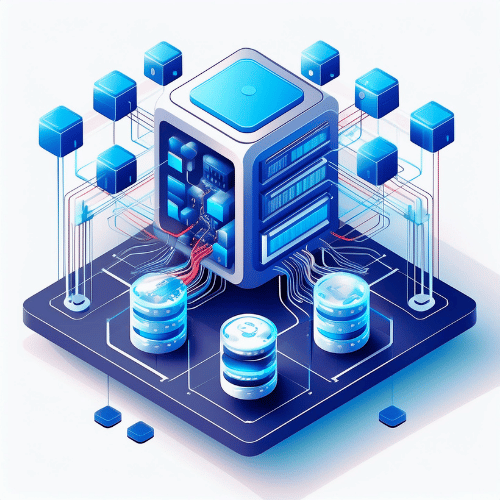Data Fabric is a sophisticated architecture designed to integrate and manage data across platforms. This blog explores its technical intricacies, benefits, challenges, and future trends for readers with a technical background.
INTRODUCTION
In the rapidly evolving landscape of data management, data fabric has emerged as a sophisticated architecture designed to address the complexities of modern data environments. For local authorities and public sector organisations, data fabric offers a unified framework for integrating, managing, and accessing data across various platforms and environments. This blog delves into the technical intricacies of data fabric, highlighting its benefits, implementation challenges, and future trends, with a focus on providing advanced insights for readers with a technical background.
DEEP DIVE INTO DATA FABRIC ARCHITECTURE
Core Components
Data Integration Layer
This layer is responsible for integrating disparate data sources using mechanisms such as ETL (Extract, Transform, Load) processes and API integrations. ETL processes extract data from various sources, transform it into a consistent format, and load it into a unified data repository. API integrations facilitate real-time data exchange between systems, ensuring up-to-date information is always available.
Metadata Management
Metadata management plays a crucial role in data fabric by providing a comprehensive view of data assets. It includes data lineage, which tracks the origin and transformation of data, and data cataloguing, which organises and indexes data for easy discovery. Robust metadata management ensures data governance and compliance with regulations.
Data Orchestration
Data orchestration involves managing data flows across different environments and platforms. It automates data movement, transformation, and integration processes, ensuring data is available where and when it is needed. This component is essential for maintaining data consistency and reliability in a distributed data environment.
TECHNICAL BENEFITS OF DATA FABRIC FOR LOCAL AUTHORITIES
Enhanced Decision-Making
Real-Time Analytics
Data fabric solutions enable real-time data processing and analytics, allowing local authorities to make informed decisions based on the latest information. This capability is achieved through data streaming technologies and in-memory processing, which provide instant insights without the latency associated with traditional batch processing.
Data Virtualisation
Data virtualisation allows users to access and query data in real-time without the need for physical data movement. By creating virtual views of data from different sources, data virtualisation simplifies data access and reduces the complexity of data integration.
Integration and Interoperability
Standardisation Protocols
Data fabric solutions leverage standardisation protocols such as RESTful APIs, JSON, and XML to facilitate data integration and interoperability. These protocols ensure that data can be exchanged seamlessly between systems, regardless of the underlying technology.
Microservice Architecture
The use of microservices in data fabric enables modular and scalable integration. Each microservice performs a specific function, such as data extraction, transformation, or loading, and can be independently developed, deployed, and scaled. This architecture enhances flexibility and resilience, allowing local authorities to adapt to changing data requirements.
Scalability and Performance
Distributed Computing
Data fabric solutions utilise distributed computing and parallel processing to handle large volumes of data efficiently. By distributing data processing tasks across multiple nodes, these solutions can scale horizontally to accommodate increasing data demands.
Elastic Scalability
Leveraging cloud infrastructure, data fabric solutions offer elastic scalability, allowing local authorities to dynamically adjust resources based on workload requirements. This capability ensures optimal performance and cost-efficiency, even during peak data processing periods.
Data Security and Compliance
Security Protocols
Advanced security measures such as encryption, access controls, and auditing are integral to data fabric solutions. Encryption ensures data is protected both in transit and at rest, while access controls restrict data access to authorised users. Auditing provides a detailed record of data access and modifications, supporting compliance with data governance regulations.
Compliance Frameworks
Data fabric solutions facilitate compliance with regulations like GDPR by automating data governance and monitoring processes. These frameworks ensure that data is handled in accordance with legal requirements, reducing the risk of non-compliance and associated penalties.
Cost Efficiency
Resource Optimisation
Data fabric optimises resource usage through logical data models and efficient data processing techniques. By minimising the need for data replication and centralisation, these solutions reduce infrastructure costs and improve operational efficiency.
OVERCOMING IMPLEMENTATION CHALLENGES
Integration with Legacy Systems
Hybrid Integration Approaches
Local authorities often operate a mix of on-premises and cloud-based systems. Hybrid integration strategies combine these environments, allowing data to flow seamlessly between legacy systems and modern data fabric solutions. This approach ensures continuity and minimises disruption during the transition.
Middleware
Solutions
Middleware acts as an intermediary layer that facilitates communication between legacy systems and data fabric solutions. It abstracts the complexities of integration, providing a unified interface for data exchange and reducing the need for extensive modifications to existing systems.
Data Quality and Governance
Automated Data Quality Checks
Ensuring data quality is critical for the success of data fabric solutions. Automated tools and techniques, such as data profiling, cleansing, and validation, help maintain high data quality standards. These tools identify and rectify data anomalies, ensuring accurate and reliable data for decision-making.
Governance
Frameworks
Advanced governance frameworks are essential for managing data within a data fabric architecture. These frameworks define policies and procedures for data access, usage, and stewardship, ensuring data is managed consistently and responsibly across the organisation.
Resource Constraints
Cost-Benefit Analysis
Conducting a detailed cost-benefit analysis helps justify investments in data fabric solutions. This analysis compares the costs of implementation, including infrastructure, software, and training, with the anticipated benefits, such as improved efficiency, reduced operational costs, and enhanced decision-making capabilities.
Funding Strategies
Local authorities should explore innovative options to fund the Data Fabric route. Entry level versions start for as low as 250/month and only increase based on actual usage. By leveraging Fabric to uncover opportunities for savings or additional revenue, Fabric becomes self-funding. For example, Fabric is great at highlighting data discrepancies and can help drive council tax up by building compliance.
MARKET TRENDS AND FUTURE EXPECTATIONS

Growth in the
Data Fabric Market
Market Projections: The data fabric market is expected to grow significantly, with projections indicating an increase from USD 2.4 billion in 2023 to USD 2.77 billion in 2024 and a compound annual growth rate (CAGR) of approximately 21.2% from 2024 to 2032. This growth is driven by the increasing demand for advanced data management solutions and the proliferation of data sources.
Technological Advancements: Recent technological advancements, such as the integration of AI and machine learning, are driving the growth of data fabric solutions. These technologies enhance data processing capabilities, enabling more sophisticated analytics and insights.
Adoption of
Cloud Technologies
Cloud-Native Architectures: Cloud-native data fabric architectures offer numerous benefits, including scalability, flexibility, and cost-efficiency. These architectures leverage cloud services for data storage, processing, and analytics, reducing the need for on-premises infrastructure.
Multi-Cloud Strategies: Adopting multi-cloud strategies enhances flexibility and resilience by distributing data and workloads across multiple cloud providers. This approach mitigates the risk of vendor lock-in and ensures continuous availability of data and services.


Focus on
AI and Machine Learning
AI-Driven Data Fabric: Integrating AI and machine learning into data fabric solutions automates data insights and predictive analytics. AI-driven data fabric can identify patterns, detect anomalies, and provide actionable recommendations, enhancing decision-making capabilities.
Use Cases: Advanced use cases of AI and machine learning in data fabric include fraud detection, predictive maintenance, and citizen sentiment analysis. These applications demonstrate the potential of AI to transform data management and service delivery in the public sector.
STRATEGIC RECOMMENDATIONS FOR LOCAL AUTHORITIES
Developing a Technical Roadmap
Step-by-Step Guide
A detailed, step-by-step guide for developing a technical roadmap for data fabric implementation includes assessing current data infrastructure, defining objectives, selecting a technology stack, and planning for integration and scalability.
Technology Stack Selection
Criteria for selecting the appropriate technology stack include compatibility with existing systems, scalability, security features, and vendor support. A well-chosen technology stack ensures seamless integration and optimal performance.
Stakeholder Engagement
Technical Workshops
Conducting technical workshops and training sessions for stakeholders ensures they understand the benefits and functionalities of data fabric solutions. These workshops facilitate knowledge sharing and collaboration.
Collaboration Tools
Collaboration tools and platforms, such as project management software and communication channels, enhance stakeholder engagement and coordination. These tools support effective project management and implementation.
Training and Support
Technical Training Programs
Advanced technical training programs for IT staff and data professionals ensure they have the skills and knowledge to manage and operate data fabric solutions. Continuous training keeps staff updated on the latest technologies and best practices.
Support Resources
Providing access to support resources, such as technical documentation, user guides, and vendor support, ensures users can troubleshoot issues and optimise the use of data fabric solutions.
SUMMARY
1.
2.
3.
INTERESTED IN LEARNING MORE?
Book a Free 30-Minute Consultation
Your business' data has potential and it can reach new heights with a Free 30-Minute Consultation from Analytium! Book a meeting with our expert, Sander De Hoogh, and get personalised insights into optimising your data strategies.
Thank you for considering Analytium. We look forward to helping you achieve your data-driven goals. Click below to schedule your consultation and start transforming your data.
During The Call, You Can Expect:
- A brief analysis of your current data challenges
- Recommendations tailored to your business needs
- An overview of how Analytium’s solutions can drive your success



